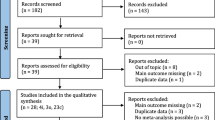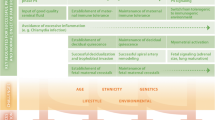Abstract
The capability to engraft into degenerative environment or damaged tissues is considered crucial to maximize the therapeutic effect of stem cells in tissue regeneration. Human chorionic plate-derived mesenchymal stem cells (CP-MSCs) isolated from the placenta have been reported to have therapeutic effects in animal models of liver injury. However, the effect of transplantation route has not been evaluated. Thus, we investigated to identify optimal transplantation conditions of CP-MSCs for functional recovery of injured liver. PKH26 labeled CP-MSCs was engrafted into carbon tetrachloride (CCl4)-injured rat model through direct transplantation into the liver (DTP), intrasplenic transplantation (STP), and intravenous transplantation via the tail vein (TTP). Non transplanted (NTP) rats were maintained as sham controls. Serum and liver tissues were analyzed post 1-, 2-, 3-week after transplantation. The engraftment of cells was higher in DTP and STP group until 3-week post transplantation. In blood chemistry, the levels of glutamate-oxaloacetate transaminase (GOT/AST), glutamate-pyruvate transaminase (GPT/ALT) and total bilirubin (TBIL) in DTP and STP rats were significantly decreased compare to those of NTP rats (p < 0.01). In addition, the expression and deposition of type I collagen in DTP and STP rats was significantly reduced when they compared with NTP animals (p < 0.01). Therapeutic efficacy was better in DTP and STP rats than in TTP group. These results suggest that the administration of CP-MSCs via STP is an effective way for their therapeutic potential. These results provide useful guidelines for the application of basic transplantation technology to the cell therapy of liver disease using placenta-derived stem cells.
Similar content being viewed by others
References
NJ Torok, Recent advances in the pathogenesis and diagnosis of liver fibrosis, J Gastroenterol, 43, 315 (2008).
JP Iredale, Cirrhosis: new research provides a basis for rational and targeted treatments, BMJ, 327, 143 (2003).
SP Horslen, IJ Fox, Hepatocyte transplantation, Transplantation, 77, 1481 (2004).
S Oyagi, M Hirose, M Kojima, et al., Therapeutic effect of transplanting HGF-treated bone marrow mesenchymal cells into CCl4-injured rats, J Hepatol, 44, 742 (2006).
YQ Xu, ZC Liu, Therapeutic potential of adult bone marrow stem cells in liver disease and delivery approaches, Stem Cell Rev, 4, 101 (2008).
MS Rao, MP Mattson, Stem cells and aging: expanding the possibilities, Mech Ageing Dev, 122, 713 (2001).
MJ Lee, J Jung, KH Na, et al., Anti-fibrotic effect of chorionic plate-derived mesenchymal stem cells isolated from human placenta in a rat model of CCl(4)-injured liver: potential application to the treatment of hepatic diseases, J Cell Biochem, 111, 1453 (2010).
CC Chien, BL Yen, FK Lee, et al., In vitro differentiation of human placenta-derived multipotent cells into hepatocyte-like cells, Stem Cells, 24, 1759 (2006).
BJ Jones, G Brooke, K Atkinson, et al., Immunosuppression by placental indoleamine 2,3-dioxygenase: a role for mesenchymal stem cells, Placenta, 28, 1174 (2007).
C Li, W Zhang, X Jiang, et al., Human-placenta-derived mesenchymal stem cells inhibit proliferation and function of allogeneic immune cells, Cell Tissue Res, 330, 437 (2007).
O Parolini, F Alviano, GP Bagnara, et al., Concise review: isolation and characterization of cells from human term placenta: outcome of the first international workshop on placenta derived stem cells, Stem Cells, 26, 300 (2008).
JA Kode, S Mukherjee, MV Joglekar, et al., Mesenchymal stem cells: immunobiology and role in immunomodulation and tissue regeneration, Cytotherapy, 11, 377 (2009).
S Barlow, G Brooke, K Chatterjee, et al., Comparison of human placenta- and bone marrow-derived multipotent mesenchymal stem cells, Stem Cells Dev, 17, 1095 (2008).
G Brooke, T Rossetti, R Pelekanos, et al., Manufacturing of human placenta-derived mesenchymal stem cells for clinical trials, Br J Haematol, 144, 571 (2009).
S Khaldoyanidi, Directing stem cell homing, Cell Stem Cell, 2, 198 (2008).
RJ Henning, JD Burgos, M Vasko, et al., Human cord blood cells and myocardial infarction: effect of dose and route of administration on infarct size, Cell Transplant, 16, 907 (2007).
Q Feng, PK Chow, F Frassoni, et al., Nonhuman primate allogeneic hematopoietic stem cell transplantation by intraosseus vs intravenous injection: Engraftment, donor cell distribution, and mechanistic basis, Exp Hematol, 36, 1556 (2008).
TK Kuo, SP Hung, CH Chuang, et al., Stem cell therapy for liver disease: parameters governing the success of using bone marrow mesenchymal stem cells, Gastroenterology, 134, 2111 (2008).
MS Penn, AA Mangi, Genetic enhancement of stem cell engraftment, survival, and efficacy, Circ Res, 102, 1471 (2008).
PC Baer, H Geiger, Mesenchymal stem cell interactions with growth factors on kidney repair, Curr Opin Nephrol Hypertens, 19, 1 (2010).
B D’Agostino, N Sullo, D Siniscalco, et al., Mesenchymal stem cell therapy for the treatment of chronic obstructive pulmonary disease, Expert Opin Biol Ther, 10, 681 (2010).
X Bai, Y Yan, M Coleman, et al., Tracking long-term survival of intramyocardially delivered human adipose tissue-derived stem cells using bioluminescence imaging, Mol Imaging Biol, 13, 633 (2010).
M Miyazaki, M Hardjo, T Masaka, et al., Isolation of a bone marrow-derived stem cell line with high proliferation potential and its application for preventing acute fatal liver failure, Stem Cells, 25, 2855 (2007).
A Banas, T Teratani, Y Yamamoto, et al., Rapid hepatic fate specification of adipose-derived stem cells and their therapeutic potential for liver failure, J Gastroenterol Hepatol, 24, 70 (2009).
SP Lam, JM Luk, K Man, et al., Activation of interleukin-6-induced glycoprotein 130/signal transducer and activator of transcription 3 pathway in mesenchymal stem cells enhances hepatic differentiation, proliferation, and liver regeneration, Liver Transpl, 16, 1195 (2010).
P Kharaziha, PM Hellstrom, B Noorinayer, et al., Improvement of liver function in liver cirrhosis patients after autologous mesenchymal stem cell injection: a phase I–II clinical trial, Eur J Gastroenterol Hepatol, 21, 1199 (2009).
DC Zhao, JX Lei, R Chen, et al., Bone marrow-derived mesenchymal stem cells protect against experimental liver fibrosis in rats, World J Gastroenterol, 11, 3431 (2005).
PC Tsai, TW Fu, YM Chen, et al., The therapeutic potential of human umbilical mesenchymal stem cells from Wharton’s jelly in the treatment of rat liver fibrosis, Liver Transpl, 15, 484 (2009).
T Nakamura, T Torimura, M Sakamoto, et al., Significance and therapeutic potential of endothelial progenitor cell transplantation in a cirrhotic liver rat model, Gastroenterology, 133, 91 (2007).
KL Streetz, T Luedde, MP Manns, et al., Interleukin 6 and liver regeneration, Gut, 47, 309 (2000).
T Wuestefeld, C Klein, KL Streetz, et al., Interleukin-6/glycoprotein 130-dependent pathways are protective during liver regeneration, J Biol Chem, 278, 11281 (2003).
GA Tiberio, L Tiberio, A Benetti, et al., IL-6 Promotes compensatory liver regeneration in cirrhotic rat after partial hepatectomy, Cytokine, 42, 372 (2008).
P Semedo, CG Palasio, CD Oliveira, et al., Early modulation of inflammation by mesenchymal stem cell after acute kidney injury, Int Immunopharmacol, 9, 677 (2009).
G Ren, X Zhao, L Zhang, et al., Inflammatory cytokine-induced intercellular adhesion molecule-1 and vascular cell adhesion molecule-1 in mesenchymal stem cells are critical for immunosuppression, J Immunol, 184, 2321 (2010).
M Magatti, SD Munari, E Vertua, et al., Human amnion mesenchyme harbors cells with allogeneic T-cell suppression and stimulation capabilities, Stem Cells, 26, 182 (2008).
U Dierssen, N Beraza, HH Lutz, et al., Molecular dissection of gp130-dependent pathways in hepatocytes during liver regeneration, J Biol Chem, 283, 9886 (2008).
A Blindenbacher, X Wang, I Langer, et al., Interleukin 6 is important for survival after partial hepatectomy in mice, Hepatology, 38, 674 (2003).
X Ren, B Hu, L Colletti, Stem cell factor and its receptor, c-kit, are important for hepatocyte proliferation in wild-type and tumor necrosis factor receptor-1 knockout mice after 70% hepatectomy, Surgery, 143, 790 (2008).
MG Cherian, YJ Kang, Metallothionein and liver cell regeneration, Exp Biol Med (Maywood), 231, 138 (2006).
Author information
Authors and Affiliations
Corresponding authors
Rights and permissions
About this article
Cite this article
Jung, J., Na, KH., Lee, MJ. et al. Efficacy of chorionic plate-derived mesenchymal stem cells isolated from placenta in CCl4-injured rat liver depends on transplantation routes. Tissue Eng Regen Med 10, 10–17 (2013). https://doi.org/10.1007/s13770-013-0364-x
Received:
Revised:
Accepted:
Published:
Issue Date:
DOI: https://doi.org/10.1007/s13770-013-0364-x




